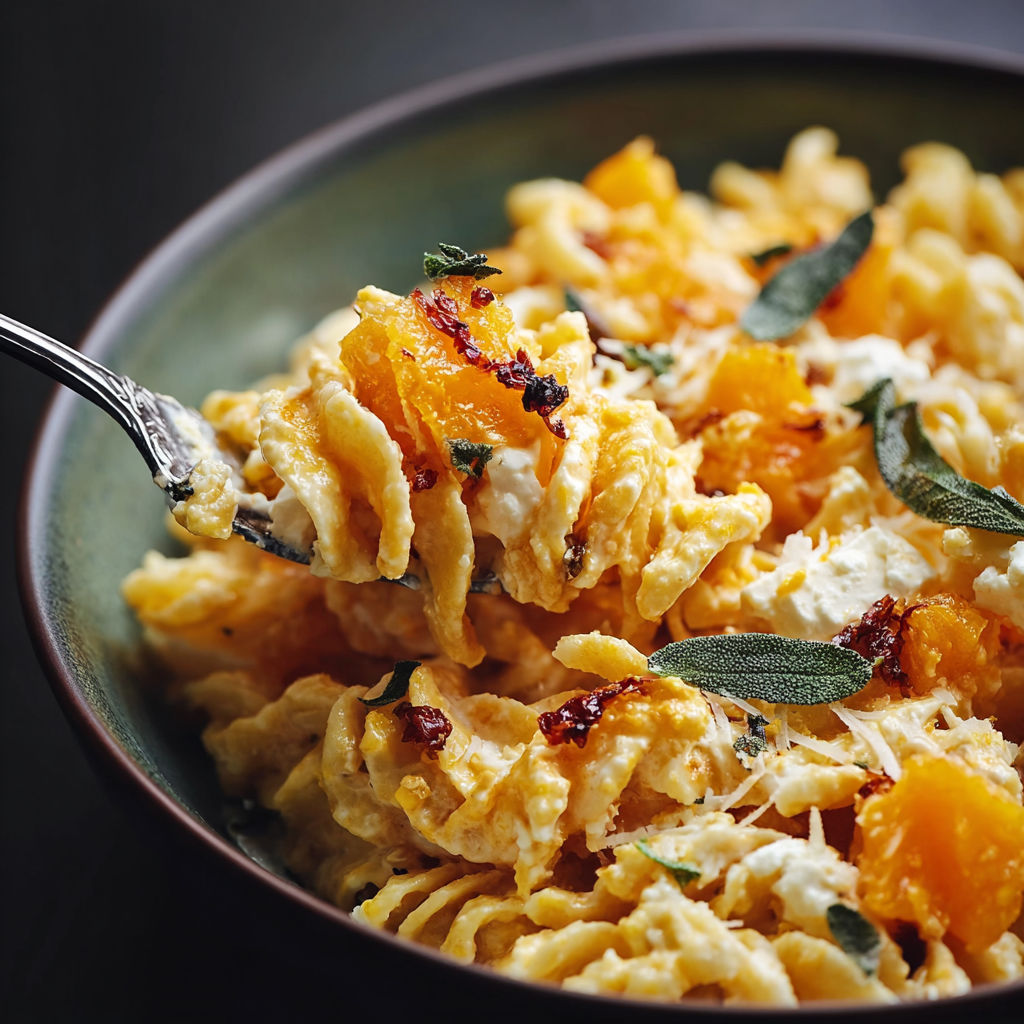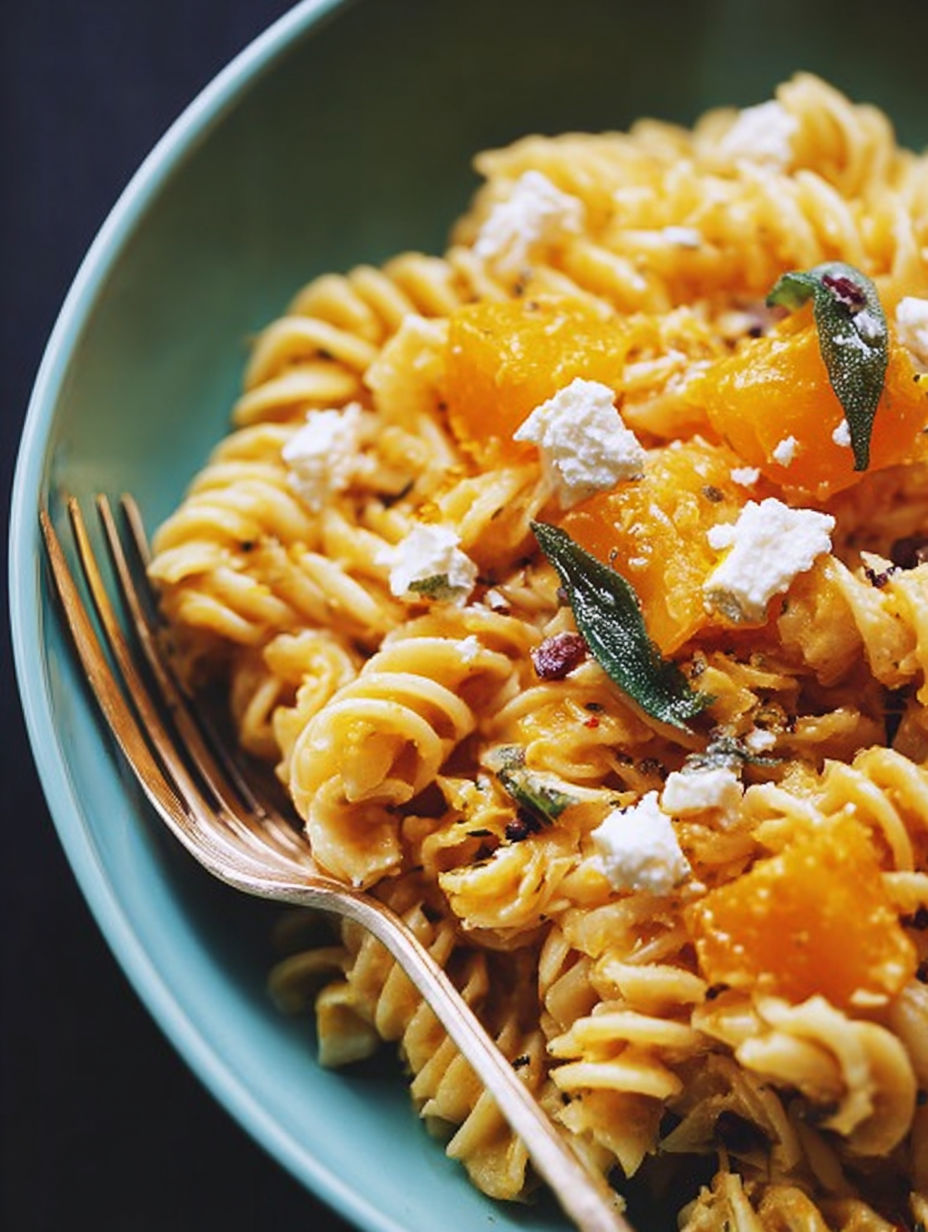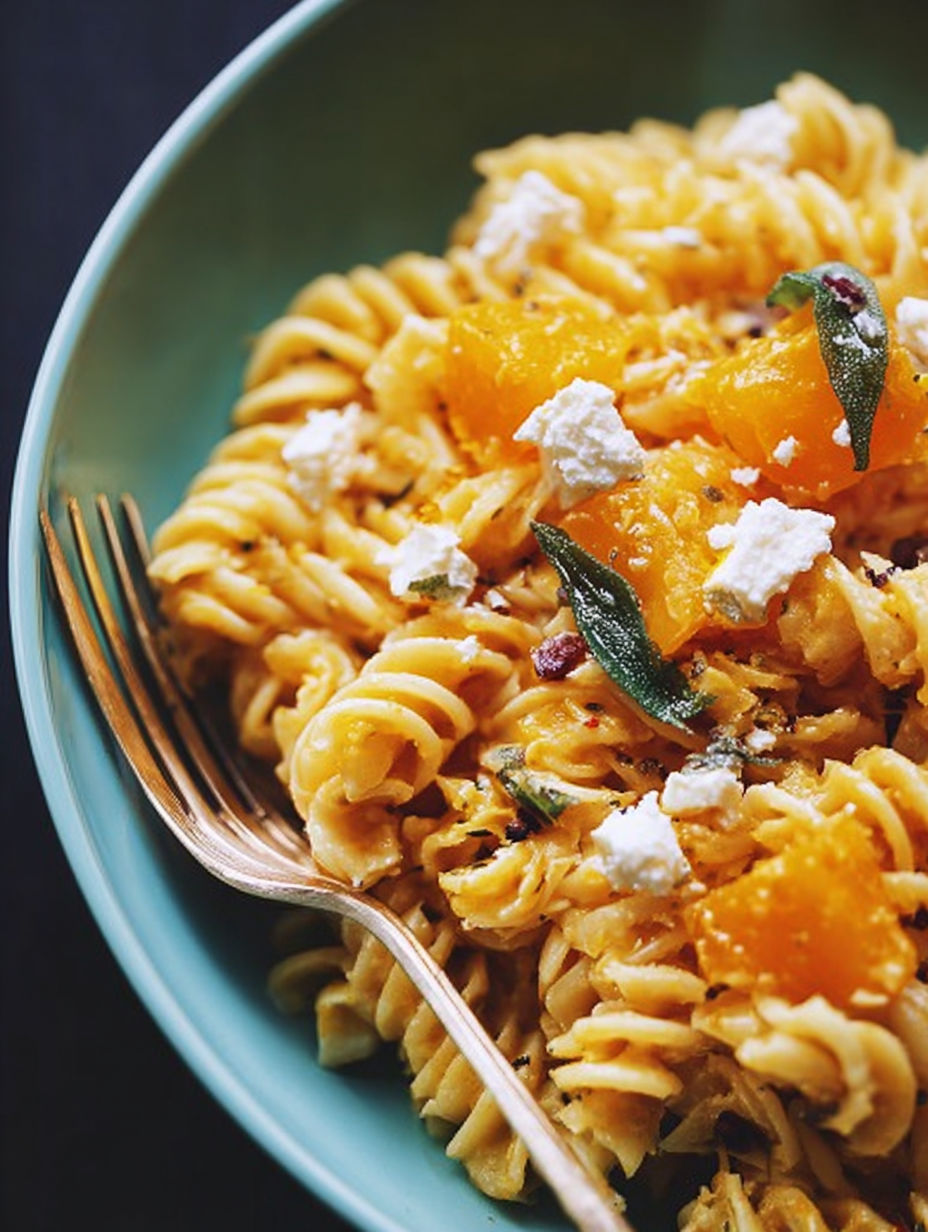 Save
Save
Baked feta and butternut squash pasta brings together cozy autumn flavors and creamy layers for a dinner that feels both comforting and a little special. Roasting the squash with a slab of feta right in the center lets everything meld together, and then a handful of sage and a drizzle of honey takes things firmly into “why didn’t I try this sooner” territory. This dish is perfect when you want something crowd-pleasing but don’t have hours to spare.
My family will eat anything with roasted squash so the first time I put feta in the middle, everyone kept asking why I “never made this before.” Now it’s my default when I want an impressive but fuss-free meal.
Ingredients
- Butternut squash: about five cups cubed look for one that feels heavy for its size and has a rich orange hue for best flavor
- Olive oil: half a cup plus extra choose a good extra virgin if you can for the best richness
- Kosher salt: use two generous pinches to bring out the squash’s natural sweetness
- Red pepper flakes: optional but great for a gentle kick pick a fresh jar for max potency
- Feta cheese: one block eight ounces ideally look for a Greek feta sold in brine for creamiest results
- Pasta: one pound such as rotini or ditalini sturdy shapes help catch all the saucy bits
- Fresh sage: about ten leaves minced fresh sage makes this dish earthy and aromatic
- Garlic: three cloves minced very fine for even flavor in every bite
- Hot honey: one tablespoon or use regular honey hot honey adds depth and a tiny bit of fire
- Fresh cracked black pepper: finish with lots of pepper right before serving for brightness
Instructions
- Preheat the Oven:
- Set your oven to four hundred degrees Fahrenheit. This high start ensures the squash softens and caramelizes while the feta warms up in the center.
- Prepare the Squash and Feta:
- In a large bowl toss the butternut squash cubes with olive oil both salt pinches and a few grinds of black pepper. Scoop everything into a large baking dish and nestle the whole block of feta in the middle. Drizzle the feta with another small splash of olive oil and some fresh black pepper. If using red pepper flakes sprinkle a pinch right over the cheese.
- Roast to Perfection:
- Place the filled dish in your oven and bake for thirty minutes. The cheese will start to soften and the squash will be fork tender. When the timer goes off gently use a spatula to lift and move the squash making sure it does not burn where it touches the pan. Do not disturb the feta.
- Finish Under High Heat:
- Increase your oven to four hundred fifty degrees. Put the dish back in the oven for five to ten minutes until the feta is just golden at the edges and the squash shows some color.
- Cook the Pasta:
- While everything roasts bring a large pot of salted water to a boil. Add the pasta and cook until just al dente. Reserve two cups of the pasta water before draining.
- Combine with Aromatics:
- Remove the baking dish from the oven and immediately scatter the minced garlic and sage over the hot feta and squash. Drizzle in the honey while everything is still steaming. Add the drained pasta right into the dish along with about one cup of reserved pasta water.
- Make the Sauce Creamy:
- Stir the hot ingredients together until the feta melts and the sauce begins to cling to the noodles. If it looks dry add small splashes of extra pasta water stirring after each until the sauce is smooth and silky.
- Season and Serve:
- Taste for salt pepper and a touch more honey if you like it sweet spicy adjust as needed. Serve hot maybe with extra cracked black pepper or a few tiny sage leaves on top.

Feta is my go-to for salty tang so when it starts to brown on the bottom and gets a little crispy it reminds me of those childhood dinners where cheese pulls were the goal and second helpings were a guarantee.
Storage Tips
Store leftovers in an airtight container and refrigerate for up to three days. The sauce may thicken overnight so a splash of water or broth when reheating brings it back to creamy. To reheat use a microwave or warm gently on the stove stirring often until hot.
Ingredient Substitutions
If you cannot find butternut squash try delicata or even sweet potato for a similar effect. Go for block feta not crumbled to ensure creamy results. No hot honey on hand use regular honey with a pinch of chili flakes.
Serving Suggestions
A bright green salad works well to balance the rich sauce. If serving for a crowd I put extra hot honey bottle on the table since some people love more sweetness and heat. To make this more filling add cooked chicken or chickpeas before baking.
Cultural and Seasonal Context
This recipe nods to Greek and Mediterranean flavors with feta and olive oil at the forefront. It feels autumnal but really works any time squash is available. Roasted sage always takes me to October evenings when it feels right to eat pasta and light a candle.
Seasonal Adaptations
Use pumpkin if butternut is not in season Add roasted brussels sprouts in winter for extra vegetables Switch to fresh basil in the spring for a brighter flavor
Success Stories
Friends who have never tried roasted feta always ask for the recipe or a second portion. A neighbor texted me after making this and said it turned her squash skeptic teenager into a pasta lover on the spot. There is something about the creaminess that surprises everyone.
Freezer Meal Conversion
If you want to freeze this for later mix the sauce and pasta together then portion individual servings into freezer safe containers. Thaw overnight and warm slowly adding water as needed and stir to restore that velvety sauce. Fresh sage can be frozen chopped flat in a zip bag for tossing in later.

Give this a try and you will see why baked feta pasta is so popular. It makes a memorable meal that feels both homey and a little special every single time.
Recipe FAQs
- → Can I use a different type of pasta?
Yes, feel free to use rotini, orzo, ditalini, or any pasta shape you like; just cook until al dente.
- → How can I make this dish spicier?
Add extra red pepper flakes or a drizzle of hot honey to enhance the heat and flavor balance.
- → Can I substitute feta with another cheese?
While feta gives a unique tang, goat cheese or ricotta could work for a similar creamy, salty finish.
- → What should I serve alongside this pasta?
A simple green salad or garlic bread pairs well, balancing the richness of the pasta dish.
- → How do I prevent the squash from sticking during baking?
Tossing the squash in ample olive oil and stirring midway through roasting prevents sticking and uneven browning.
- → Can I use dried sage instead of fresh?
You may use dried sage, but reduce the amount since it’s more concentrated than fresh sage leaves.
